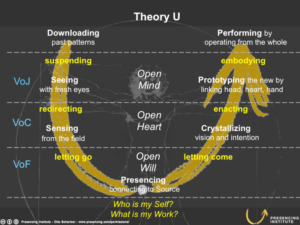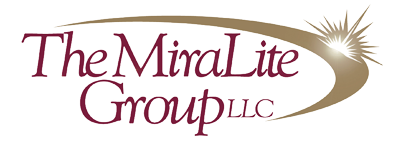“It is only with the heart that one can see rightly; what is essential is invisible to the eye.”
–from The Little Prince by Antoine de Saint-Exupéry
One of my all-time favorite science fiction movies is Back to the Future, released in 1985. Through a string of mishaps and a handy time-machine, Marty McFly, the main character in the movie goes back in time and encounters his past. Despite his best efforts, he sets off a chain of events—because of his actions—that begin to alter that past. When he finally returns to his life in the future, he sees how those actions altered the future…for the better. I really like the movie because it makes me think about how decisions made today shape the future.
For some time, I’ve been writing and speaking about creating positive futures for all. Yet, I must admit that when using “future”, I had in mind something we’re still searching and reaching for, something we can’t yet see with our eyes. Reflecting on Back to the Future led me to challenge my thinking about “future”, and to begin to look more closely at what’s underlying the decisions we are making in different spheres of our lives, especially with in workplaces.
We are living through extremely complex times in which systems, organizations, power dynamics, economies, societies and human well-being are in a state of flux and great change. These are liminal times in which old ways of working and old structures are being challenged and are decaying, while new structures and ways of working are trying to emerge. The feeling of dis-ease, fear, unsolvable complexity, needing to dominate the other, or uncertainty is becoming almost a constant partner for many individuals, companies and institutions. And that feeling is driving many of today’s decisions or lack of decisions.
In a recent study, Deloitte reported that the millennial generation is really feeling uneasy about the future. They feel pessimistic about political and social progress and are concerned about safety, social inequality, and the environment. I’m a “late” baby boomer with two millennial sons. When I read the news headlines or listen to the evening news, my optimism about positive futures for our society, for any of the four generations[1] in today’s workplaces, and for my sons begins to wane. I, too, feel unease.
Especially in these times, a critical mandate for individuals in positional leadership is to create ways in which these feelings of unease and uncertainty can be transformed into forward action that moves us, with inspired vision, into the future. Innovation, change, adapting, evolving, creativity, and accessing our desires for a positive future all demand that.
To address my own feelings of unease, a year ago I began to look for individuals, groups, thought leaders who are researching, writing about, or creating roadmaps for, these liminal times, especially in the areas where MLG does its works. And I revisited an approach that I first tested in the workplace in the early 2000s, Theory U, developed by Otto C. Scharmer, lecturer at MIT, and co-founder of the Presencing Institute. Theory U provides a systems approach to change and to the role leadership plays in bringing about transformation.

Over the last 15 years, Theory U has evolved to consider the world-wide display of resistance to change, wanting to hold on to the status quo, the increase in reactionary behavior, and attempts to turn back the hands of time. Recently, I signed up to take a refresher course on Theory U. As a result, my view on the see-ability of the future is changing. And my unease began to decline when I heard Scharmer posit that the future actually is already here; it’s already around us; we just need to sense, attend to, and actualize emerging possibilities.

Image: Otto Scharmer, Contributor, Huffington Post, January 8 , 2018
Theory U and the work that the Presencing Institute is supporting around the world expanded my thoughts on see-ability of the future. The future is shaped by much more than the decisions we make, but also by the choices we consider, who’s involved in considering the choices, and then how the decision is made. Theory U provides a process, especially in the context of change and transformation, for organizations, groups, and institutions in our societies to look beyond the familiar to see the emerging possibilities and to co-creatively engage in shaping the future with decisions made that consider all the stakeholders.
Within workplaces, I believe there are three key aspects of Theory U that can profoundly affect what future(s) emerge from decisions made:
- A co-creative, decision process involving multiple stakeholders (co-creating);
- Space created for accessing the intuitive knowledge and wisdom within the heart (sensing), something few of us feel comfortable doing in our work; and
- Being open to seeing the present with “new eyes” using our deepest source (presencing).
So, it’s more than just the actual decisions we make that shape the future—as I initially deduced from Back to the Future. It’s also very much the process, who’s involved, and the willingness to see, feel, and intuit beyond our familiar ways of thinking.
Decision is a risk rooted in the courage of being free.”
—Paul Tillich
In change management we know that people own what they help create. To create workplaces where this sort of inquiry and deciding are supported will require courageous, positional leaders, shared or collaborative leadership, and a willingness to embrace new ways of working. Multi-generational workplaces that embrace diversity equity & inclusion (DEI), I believe, can excel at using the Theory U process to create positive futures beneficial to the triple bottom-line (growth, social capital and sustainable environmental impact). There’s growing evidence that DEI really matters, and is worth investing in!
These are the types of workplaces in which the unease of millennials and many others can be redirected and creatively channeled into co-creating a future within the workplace and beyond that will be supportive to all. And the quality of leadership will be crucial…but that’s a conversation for our next blog.
Right now, I’m going to take a break and watch another movie!
Barbara
Barbara
[1] Generations: Boomers; Gen X, Millenials and Gen Z. It’s possible there also could be a few of the Silent Generation still in the workforce, which means five generations could be present in a workplace.
